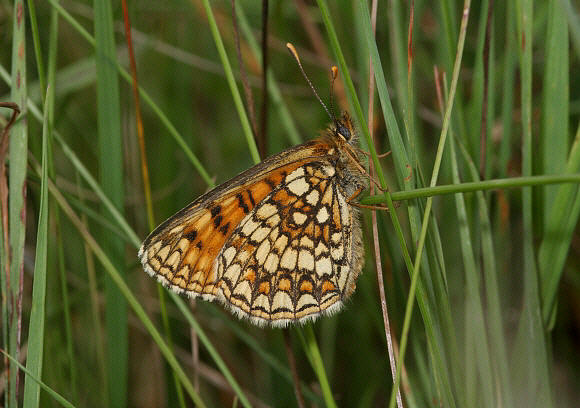 Assmann’s Fritillary Mellicta britomartis, Velebit mountains, Croatia – Peter Bruce-Jones
Assmann’s Fritillary Mellicta britomartis, Velebit mountains, Croatia – Peter Bruce-Jones
Introduction
The genus Mellicta contains between 12-16 species depending on whether certain taxa are treated as subspecies or full species. The genus is centred on temperate Asia but there are 9 species whose range includes or lies entirely within Europe i.e. asteria, athalia, aurelia, britomartis, deione, varia, nevadensis, caucasogenita and parthenoides. The most widespread species is athalia which is a common insect in almost every country in Europe and temperate Asia.
All Mellicta species have orange-brown uppersides overlaid with a linear network of blackish spots and lines. The undersides are all very similar, being pale yellow with a central band of pale spots, pale submarginal lunules and other pale spots set within an orange basal area.
Mellicta britomartis is distributed from Switzerland to Mongolia, China and Korea.
 Assmann’s Fritillary Mellicta britomartis, Hor valley, B�kk hills, Croatia – Peter Bruce-Jones
Assmann’s Fritillary Mellicta britomartis, Hor valley, B�kk hills, Croatia – Peter Bruce-Jones
Habitats
This butterfly inhabits grassy woodland clearings and forest edge habitats at elevations between about 300-900m.
Lifecycle
The eggs are laid in heaps under the leaves of Plantago, Veronica and Rhianthus. During the early instars the larvae live communally within a silk web. After hibernation they split into smaller groups and eventually become solitary.
Adult behaviour
In the mornings males patrol in search of females. Copulation occurs in late morning. Both sexes nectar primarily at Asteraceae. On overcast days and at dusk the adults roost openly at the top of dead flowerheads.
